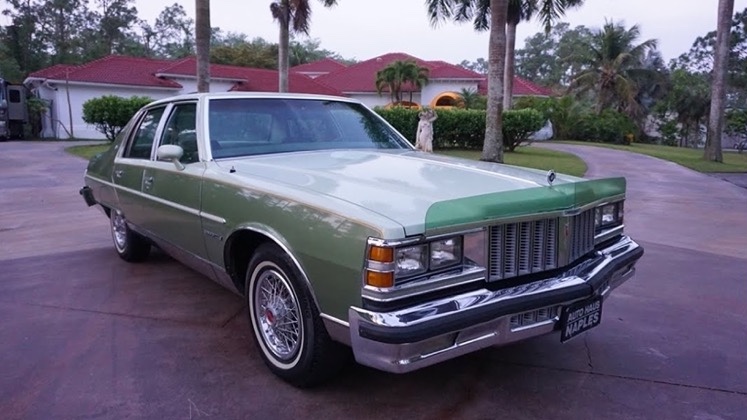1979 was quite an eventful year for the world. It saw the rise of multiple dictators, China’s one-child policy, and president Jimmy Carter attacked by a rabbit. But perhaps most significantly (for car enthusiasts at least), 1979 saw gas prices shoot up to around 86 cents a gallon. Rising gas prices would eventually spell the end for GM’s B-Body and the sixth-generation Pontiac Bonneville, the last full-sized model to bear the nameplate until 2000, as it was replaced with a mid-sized option from ’81 onwards.
Bill from Curious Cars shows us around a remarkably original 1979 Bonneville and gives us an insight into what exactly made the B body Pontiac so nice.
The B body platform was one of GM’s most successful. The underpinnings had a production run of 70 years (from 1926 to 1996) and spawned many greats, with the Bonneville being based on of this platform for a period of 23 years and six generations. The Bonneville was a big seller for GM and was featured in multiple movies and TV shows, and has since become a rather collectible car for enthusiasts of American iron.
Watch: The Fifth Generation Pontiac Grand Prix Was Tech-Laden And Deserves To Be Remembered
The sixth-generation was offered in three body styles: four-door sedan, four-door station wagon, and two-door hardtop coupe. The car was equipped with a host of engines, some of which were changed over during its production run due to the oil crisis in the early ’70s.
While the fuel crisis may have relegated the sheer size of the Bonneville to the history books, this sixth-gen survivor featured remains a fascinating look back at the past. With the lashings of chrome, bug guard, and fender skirts all intact, it is a rather fetching period piece. The originality extends inside, with a green velour interior and an AM 8-Track radio.
The host reasons that the sixth-gen was probably the last to harness the magic that the nameplate used to stand for before devolving into a front-wheel drive configuration in the ’80s. Most of that charm was down to the B body chassis, which, according to Bill, had the edge over Ford’s Panther alternative. By the time the Bonneville was retired, along with the Pontiac brand itself, they were just a shadow of what they were in the ’70s.




